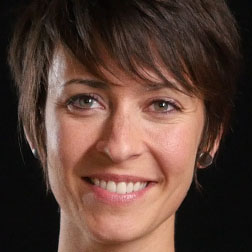Recently a leader in one of our cohorts shared a challenging facilitation experience:
“I was facilitating a project meeting for a large organization with leaders from different teams present. While everyone was on the same page about some aspects of the project – such as the timeline and key roles – I was also aware of a general sense of stuckness and frustration in the room. Tensions kept surfacing around various topics, and recurring issues were causing the conversation to cycle around unproductively. I too began to experience a parallel sense of stuckness and overwhelm – I felt their pain, but wasn’t clear on where to begin to move them towards a more productive conversation.”
Does this scenario sound familiar to you?
While each culture, organization or team is unique, at its heart is a common challenge:
A lack of alignment.
So what do we mean by ‘alignment’? And how do we recognize it when it’s present – or not? And how do we help build this as a foundation for more robust and enjoyable collaborations?
Alignment describes how coherent we are with others across our intentions, motivations, needs and interests – the bigger picture of our work together.
When we have coherence at this level, we produce more of the outcomes that we care about – like satisfying solutions, strong commitments, clear decisions….and gratifying relationships. 🙂
You may be wondering: ‘Aren’t agreement and alignment the same thing?’
No – And this distinction matters, because weaving alignment isn’t merely about forging agreements or getting closure on a specific issue. We’re facilitating something more fundamental.
For example, agreements are generated by decision-making and governance approaches. At one end of the spectrum an agreement can be decreed, on the other, it can be reached by consensus, with many approaches falling between the two.
What’s important to understand is that agreement can pave the way for action but it does not necessarily alleviate underlying frictions that can disrupt or obstruct our collaborations.
Tangible evidence of agreements include budgets, hiring plans, project timelines, and metrics and measures.
And having agreement around these areas might allow us to work together. But when we’re aligned in our intentions to create a shared vision, our agreements are easier to arrive at, and more robust and durable, because you have the strong underlying ‘roots’ to generate from.
Pause here for a moment and see if you can call to mind some recent agreements by teams or groups you’ve worked with that were not generated from a strong foundation of alignment.
For example:
- Decisions made and passed down by ‘higher ups’ in the hierarchy
- Short-term fixes that didn’t address long-standing issues
- Choices that resulted in two parts of the organization working at cross purposes with each other
- Completing work that wasn’t at the highest level of quality it couldn’t have been.
- Learning is transactional, and not generating more developmental advantages
Each of these examples points to an opportunity to shore up some of the weaker areas of the foundation.
By asking clarifying questions, listening deeply, and taking a collaborative view, it’s possible for leaders to diagnose, resolve and cultivate alignment where it is needed.
In doing so, it’s possible to prevent similar issues resurfacing later, and to avoid the escalation of problems to more senior leaders.
And…it’s possible to be aligned about where we are misaligned 🙂 For example, when people identify the same underlying cause to a shared issue (and even the fact that they see the issue as a shared one) – this is an important milestone that should not be taken for granted.
So how would you do that? A skilled facilitative move when groups do align around the cause of their friction would be to amplify and appreciate their ‘alignment around the misalignment’ as a starting point!
Alignment creates more space for continuity and creativity, and agreements create closure.
Alignment lies at the heart of what you are optimizing for.
Of course, we need to generate outcomes, and skilfully apply objective tools like an agenda, timeframes and roles. And we also need to develop our facilitative presence and communication skills.
But what a facilitator does with these tangibles is to work more effectively to shape the intangible and more subtle dimensions of alignment. This is where facilitation moves from being a technical know-how into an art of sensing and responding to what is happening in any given moment. So anywhere that you perceive misalignment is your opportunity to facilitate increased clarity and mutual understanding, and this makes facilitating and weaving alignment one of the greatest contributions you can make, especially in matrix organizations.
How can you perceive the degree of alignment?
Here are some initial questions to prompt you to consider what alignment looks and feels like within a team, organization, or community:
- Does everyone participating have a shared understanding of what this organization/team/project is for, and why it matters in the larger context of our work together?
- Do we share a common perspective on our priorities and goals?
- How aligned are we about the roles we play in the team or project?
- How similar are our perceptions of how we are working together?
- Do we suffer from chronic misalignment—in perspectives, timeframes, approaches—that is hindering our ability to easily get on the same page?
- Do our teams or divisions have different working styles, profession-specific mental models, and cultural norms that are impacting our alignment?
When your intention is to create and increase alignment, many choices and “moves” or interventions will appear.
As mentioned above, when we’re aligned in our intentions, our agreements are easier to arrive at, and more robust and durable, because they come from a deeper level of coherence. When we can build more alignment between different people, teams, and stakeholders, we can all be more adaptive and empowered to work towards visions and outcomes that really matter.
If you liked this post, you may be interested in our free guide:
Conflict to Breakthrough: Key distinctions for weaving alignment
______________________________________________________________________________________
Ten Directions develops intra-personal, interpersonal, and facilitative skills for weaving alignment across teams, projects, and stakeholders.
If you guide investments in leadership development, cross-functional work and teaming and want to learn more about how we can support this kind of facilitative leadership development for your organization , please reach out to discuss your needs.
You may download our brochure for our cohort program Weaving Alignment: Facilitative leadership for matrix organizations™ here.




